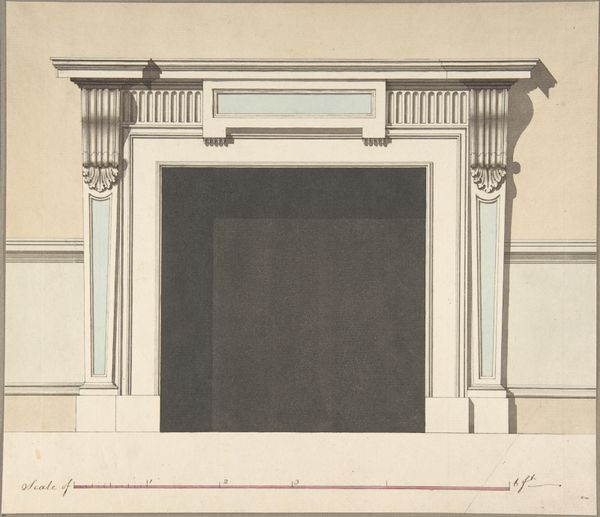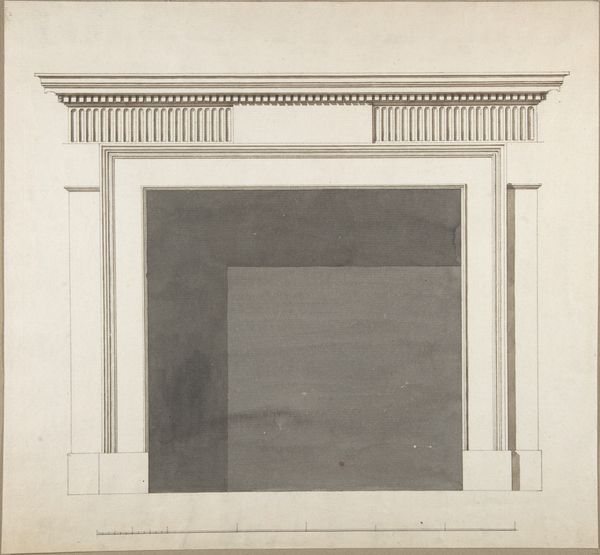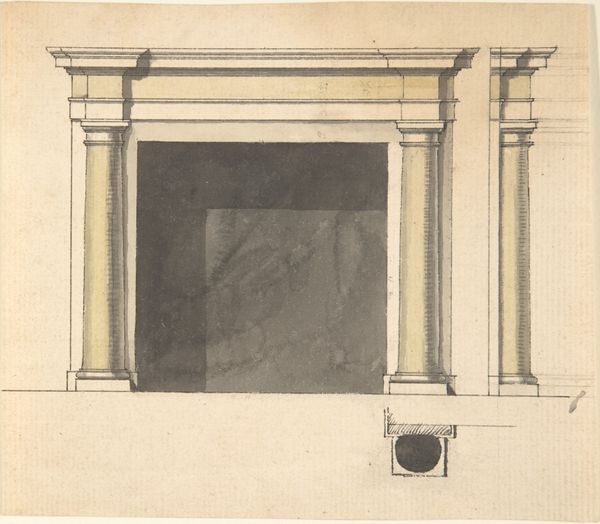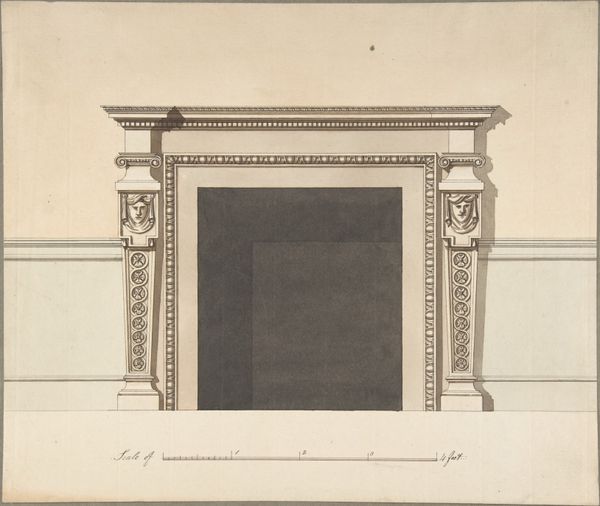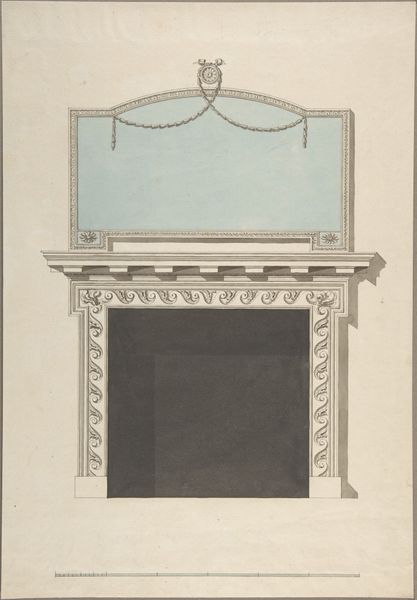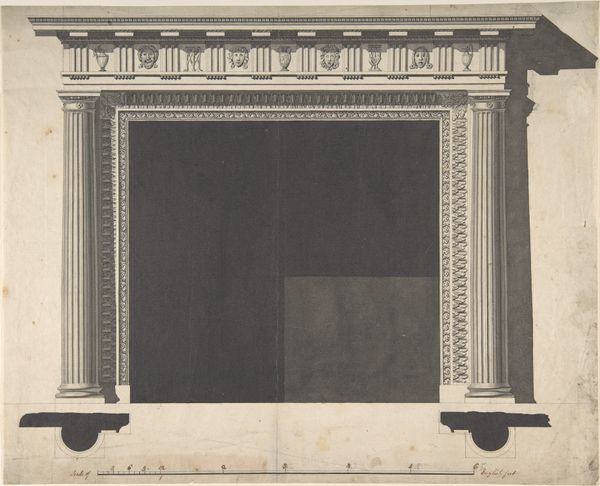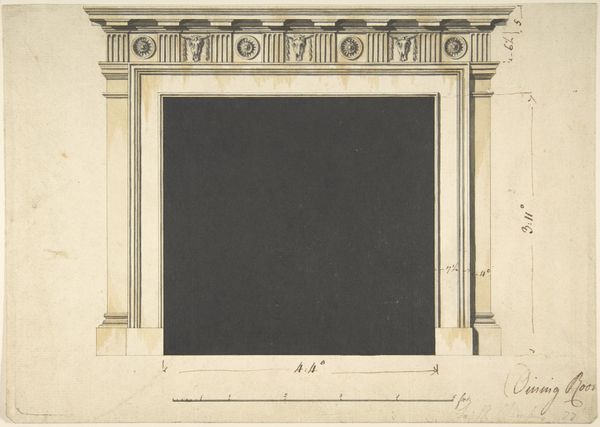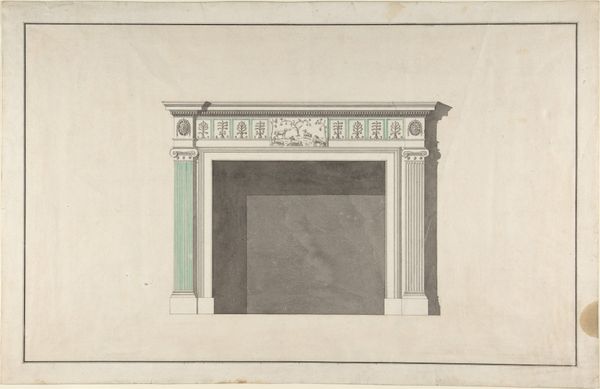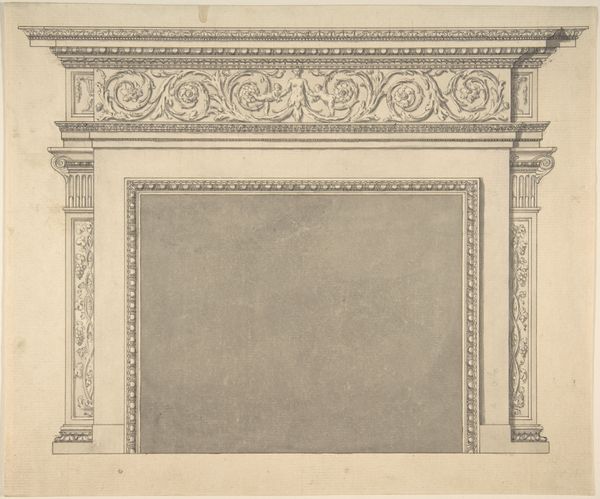
drawing, print, architecture
#
drawing
#
historical design
#
neoclacissism
# print
#
classical-realism
#
geometric
#
history-painting
#
decorative-art
#
architecture
Dimensions: sheet: 10 1/4 x 10 1/4 in. (26 x 26 cm)
Copyright: Public Domain
Editor: So, here we have John Yenn’s “Design for a Chimneypiece,” dating from somewhere between 1770 and 1821. It’s a drawing, a print, so essentially architecture on paper. I’m immediately struck by how…stiff it feels, but in a precise and balanced way. How would you interpret this work? Curator: The apparent "stiffness" you observe isn’t just about precision; it's about invoking a certain emotional and intellectual response rooted in the classical past. The symmetry, the geometric forms, the restrained ornamentation - all of these echo ancient Greek and Roman ideals. What symbols do you recognize, and what feelings do they evoke for you? Editor: I see the laurel wreath – a symbol of victory or achievement. And the fluted columns – they always say ‘grandeur’ to me. So, this design isn’t just about functionality, it’s making a statement. About power, maybe? Curator: Precisely! Neoclassicism was often used to legitimize authority by associating it with the perceived virtues of antiquity – order, reason, and civic duty. This chimneypiece becomes more than just a source of heat; it’s a declaration, an embodiment of certain values. How might the intended owner have wanted to be perceived through this design? Editor: They probably wanted to appear educated, refined, someone of taste and substance, linking themselves to a glorious past. So, it's not just decorative; it's a form of visual branding. Curator: Exactly. The image serves as a potent symbol of cultural memory and aspiration. Considering the revolutions of the late 18th century, the return to these classical motifs must have felt reassuring, a way to assert order amid change. Editor: I never thought about it like that. Seeing it as more than just a pretty design, but as a reflection of anxieties of its time, that is very insightful! Curator: Art always carries more than meets the eye; it's about deciphering the layers of cultural memory embedded within the imagery.
Comments
No comments
Be the first to comment and join the conversation on the ultimate creative platform.
